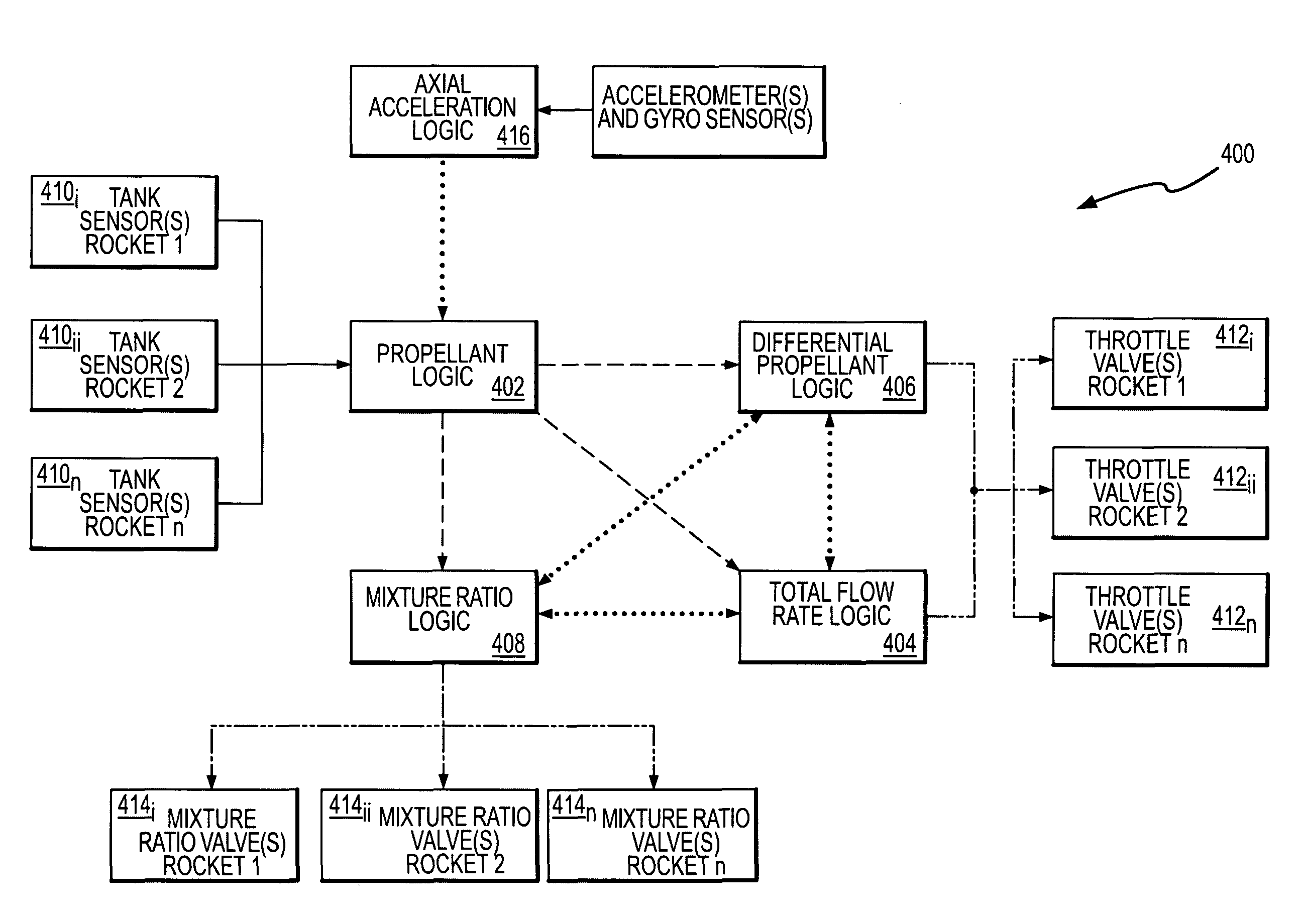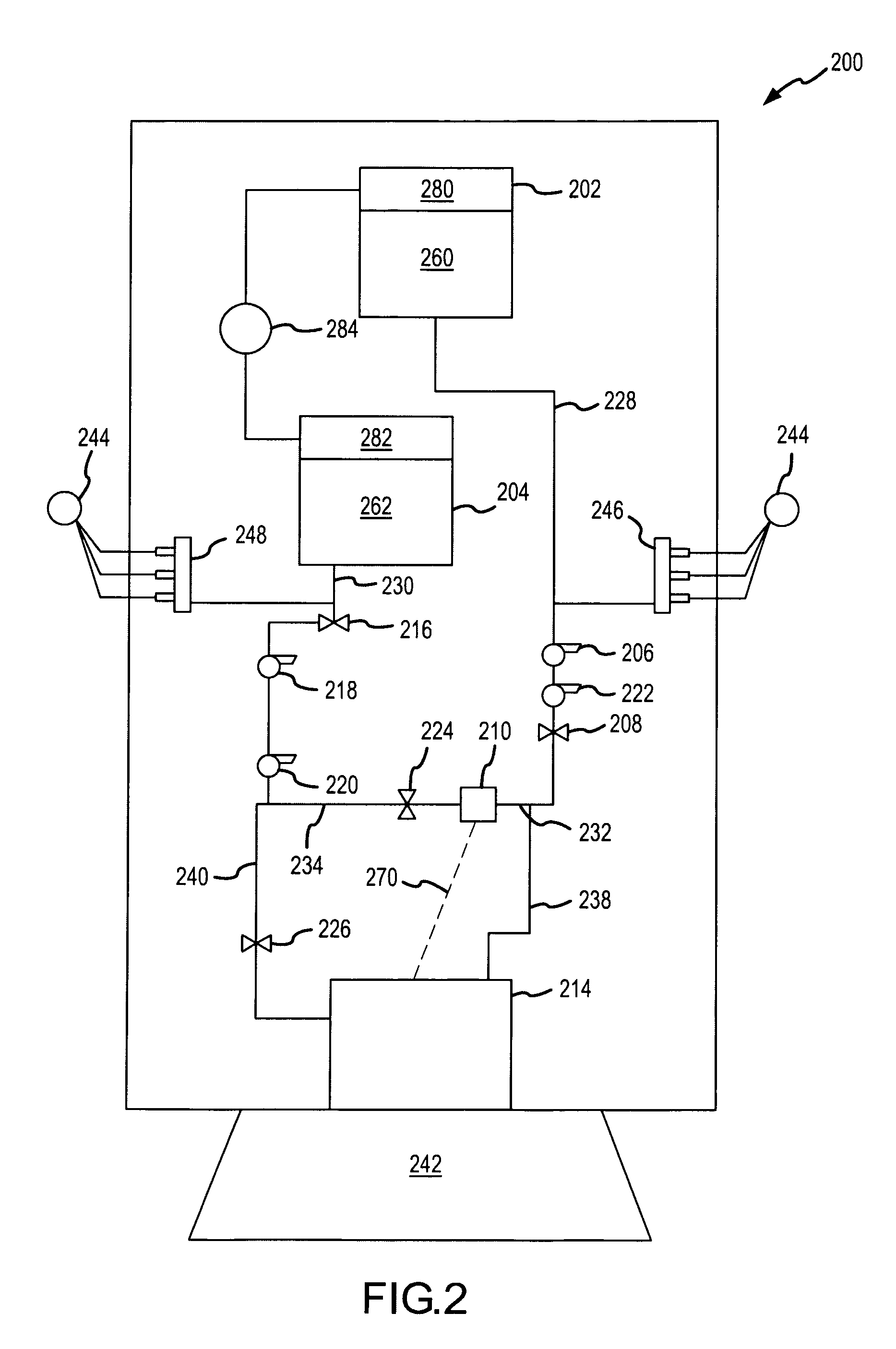Propellant management system and method for multiple booster rockets
a technology of propellant management system and booster rocket, which is applied in the field of booster vehicles, can solve the problems of increasing the difficulty of simultaneous depleting liquid propellant, affecting the performance of the booster rocket, and the risk that the rocket will not run out of propellant, so as to reduce the amount of propellant and increase the throttle
- Summary
- Abstract
- Description
- Claims
- Application Information
AI Technical Summary
Benefits of technology
Problems solved by technology
Method used
Image
Examples
Embodiment Construction
[0062]Reference will now be made to the accompanying drawings, which at least assist in illustrating the various pertinent features of the present invention. FIG. 1 illustrates one embodiment of a space vehicle 100. The space vehicle 100 generally includes a payload 102 and a launch vehicle 108, which comprises a first thrust source 110 and a second thrust source 104. As depicted, the space vehicle 100 comprises one rocket for the second thrust source 104. It will also be appreciated that any appropriate number of rockets could be used by the second thrust source 104. Also as depicted, the first thrust source 110 comprises two liquid propellant strap-on rockets or boosters 106. It should be appreciated that any appropriate number of liquid propellant rockets 106 may be utilized by the space vehicle 100. For instance, the first thrust source 110 could comprise more than two liquid propellant rockets 106, such as 3, 4, 5, 6, 7, 8 or more rockets 106. Various ways of controlling the op...
PUM
 Login to View More
Login to View More Abstract
Description
Claims
Application Information
 Login to View More
Login to View More - R&D
- Intellectual Property
- Life Sciences
- Materials
- Tech Scout
- Unparalleled Data Quality
- Higher Quality Content
- 60% Fewer Hallucinations
Browse by: Latest US Patents, China's latest patents, Technical Efficacy Thesaurus, Application Domain, Technology Topic, Popular Technical Reports.
© 2025 PatSnap. All rights reserved.Legal|Privacy policy|Modern Slavery Act Transparency Statement|Sitemap|About US| Contact US: help@patsnap.com



